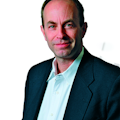Livermore, CA--Scientists for the first time have used an intense X-ray free electron laser (XFEL) to probe materials.
Using the Linac Coherent Light Source (LCLS) facility at the SLAC National Accelerator Laboratory, scientists at the Lawrence Livermore National Laboratory (LLNL) probed nitrogen gas at X-ray energies of up to 8 keV, the highest X-ray energy ever used at an XFEL, to see how it behaved when the laser hit it.
The photoluminescence-based pulse-energy detector allowed the team to study the interaction--including electron dynamics and space-charge effects--between nitrogen and the XFEL beam. The XFEL's light pulses are so bright and short (they have pulse durations ranging from 10 to 100 fs) that LLNL scientists were able to validate the physics of simulations done for nitrogen gas.
"The detailed physics is very important for most LCLS experiments since it determines the interpretation of the results," said LLNL scientist Stefan Hau-Riege. "The unique thing about this experiment is that it was performed upstream from the LCLS mirrors, and so we had access to the full range of LCLS X-ray energies (which went up to 8 keV at the time)."
Molecular movies
In addition to the laser, the LCLS contains a "femto-camera" that can sequence images of the ultrasmall taken with the ultrafast laser pulses. For the first time, scientists are creating molecular movies.
The LCLS, and its cousins planned in Germany and Japan, improves on third-generation light sources. The third-generation sources are circular, stadium-sized synchrotrons, and they produce streams of incoherent X-ray photons. Since their pulses are long compared to the motion of electrons around an atom, synchrotron light sources cannot begin to explore the dynamic motion of molecules.
The research will appear in the July 27 online edition of Physical Review Letters.
About the Author
John Wallace
Senior Technical Editor (1998-2022)
John Wallace was with Laser Focus World for nearly 25 years, retiring in late June 2022. He obtained a bachelor's degree in mechanical engineering and physics at Rutgers University and a master's in optical engineering at the University of Rochester. Before becoming an editor, John worked as an engineer at RCA, Exxon, Eastman Kodak, and GCA Corporation.
